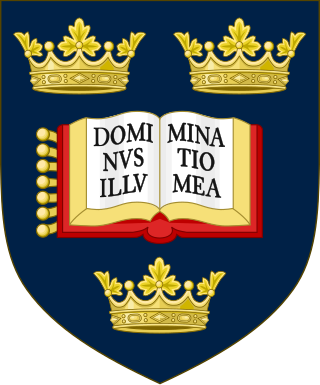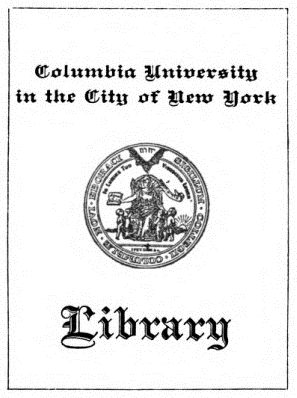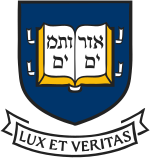
The Great Seal is the seal of the United States. The phrase is used both for the impression device itself, which is kept by the United States secretary of state, and more generally for the impression it produces. The obverse of the Great Seal depicts the national coat of arms of the United States while the reverse features a truncated pyramid topped by an Eye of Providence. The year of the U.S. Declaration of Independence, 1776, is noted in Roman numerals at the base of the pyramid. The seal contains three Latin phrases: E Pluribus Unum, Annuit cœptis, and Novus ordo seclorum.

A motto is a sentence or phrase expressing a belief or purpose, or the general motivation or intention of an individual, family, social group, or organization. Mottos are usually found predominantly in written form, and may stem from long traditions of social foundations, or from significant events, such as a civil war or a revolution. One's motto may be in any language, but Latin has been widely used, especially in the Western world.

Veritas is the name given to the Roman virtue of truthfulness, which was considered one of the main virtues any good Roman should possess. The Greek goddess of truth is Aletheia. The German philosopher Martin Heidegger argues that the truth represented by aletheia is different from that represented by veritas, which is linked to a Roman understanding of rightness and finally to a Nietzschean sense of justice and a will to power.
In the Hebrew Bible, the Urim and the Thummim are elements of the hoshen, the breastplate worn by the High Priest attached to the ephod, a type of apron or garment. The pair are used frequently in the Old Testament, in Exodus 28:30 through God's instruction to Aaron on how to adorn his breastplate worn in the holy place; in 1 Samuel 14:41 by King Saul to determine who was at fault for breaking the army's fast; and Ezra 2 to determine whether those who claimed to be the descendants of the priests of Israel were truly of that class. The Urim and Thummim are sometimes connected by scholars with cleromancy, although it is equally likely no casting was physically done, and the participants of Lights and Perfection waited for a sign to answer a question or reveal the will of God.

According to Latter Day Saint theology, seer stones were used by Joseph Smith, as well as ancient prophets, to receive revelations from God. Members of the Church of Jesus Christ of Latter-day Saints believe that Smith used seer stones to translate the Book of Mormon.

An ephod was a type of apron that, according to the Hebrew Bible, was worn by the High Priest of Israel, an artifact and an object to be revered in ancient Israelite culture, and was closely connected with oracular practices and priestly ritual.

"Let there be light" is an English translation of the Hebrew יְהִי אוֹר found in Genesis 1:3 of the Torah, the first part of the Hebrew Bible. In Old Testament translations of the phrase, translations include the Greek phrase γενηθήτω φῶς and the Latin phrases fiat lux and lux sit. It is part of the Genesis creation narrative.

The Great Seal of the State of Colorado is an adaptation of the territorial seal which was adopted by the First Territorial Assembly on November 6, 1861. The only changes made to the territorial seal design being the substitution of the words "State of Colorado" and the figures "1876" for the corresponding inscriptions on the territorial seal. The first General Assembly of the State of Colorado approved the adoption of the state seal on March 15, 1877. The Colorado Secretary of State alone is authorized to affix the Great Seal of Colorado to any document whatsoever.

The Great Seal of Missouri is used to authenticate certain documents issued by the Government of Missouri. The phrase is used both for the physical seal itself, which is kept by the secretary of state, and more generally for the design impressed upon it. The Great Seal was designed by Robert Wells of Jefferson City.
Tetzaveh, Tetsaveh, T'tzaveh, or T'tzavveh is the 20th weekly Torah portion in the annual Jewish cycle of Torah reading and the eighth in the Book of Exodus. The parashah reports God's commands to bring olive oil for the lamp, make sacred garments for the priests, conduct an ordination ceremony, and make an incense altar.

The coat of arms of the University of Oxford depicts an open book with the inscription Dominus Illuminatio Mea, surrounded by three golden crowns. It is blazoned:
Azure, upon a book open proper leathered gules garnished or having on the dexter side seven seals of the last the words DOMINVS ILLVMINATIO MEA all between three open crowns two and one or.

This article details the official symbols in use by the Federal Bureau of Investigation (FBI), the domestic intelligence and security service of the United States.

In the Latter Day Saint movement, the term Urim and Thummim refers to a descriptive category of instruments used for receiving revelation or translating languages. According to Latter Day Saint theology, the two stones found in the breastplate of Aaron in the Old Testament, the white stone referenced in the Book of Revelation in the New Testament, the two stones bound by silver bows into a set of spectacles (interpreters) that movement founder Joseph Smith said he found buried in the hill Cumorah with the golden plates, and the seer stone found while digging a well used to translate the Book of Mormon are all examples of Urim and Thummim. Latter Day Saint scripture states that the place where God resides is a Urim and Thummim, and the earth itself will one day become sanctified and a Urim and Thummim, and that all adherents who are saved in the highest heaven will receive their own Urim and Thummim.

The Seal of Dartmouth College is the official insignia of Dartmouth College, an Ivy League university located in Hanover, New Hampshire, United States. The original seal of Dartmouth College was adopted in 1773, and was engraved by Nathaniel Hurd, who also designed the seal for Harvard College. In 1940, the seal was redone as a line drawing by W. A. Dwiggins, and was further modified in 1957 to correct the founding year of the school from 1770 to 1769. Although Dartmouth College introduced a new logo known as the "D-Pine" in 2018, school officials at the time said that it was not intended to replace the shield.

Oliblish is the name given to a star or planet described in the Book of Abraham, a text considered sacred to many denominations of the Latter Day Saint movement, including the Church of Jesus Christ of Latter-day Saints(LDS Church). Several Latter Day Saint denominations hold the Book of Abraham to have been translated from an Egyptian papyrus scroll by Joseph Smith, the founder of the movement. According to this work, the term Oliblish was given as the meaning of the main symbols in one of the images of Smith's hypocephalus. Smith stated that the image is meant to represent a heavenly body located nearest to the central Kolob, the planet or star closest to the throne of God.

Via et veritas et vita is a Latin phrase meaning "the way and the truth and the life". The words are taken from Vulgate version of John 14, and were spoken by Jesus in reference to himself.

Harvard University adopted an official seal soon after it was founded in 1636 and named "Harvard College" in 1638; a variant is still used.
William (Wilhelm) Muss-Arnolt was an Assyriologist and librarian known for his exposition of the Assyrian language.

The coat of arms of the University of Sheffield is the official heraldic emblem of the University of Sheffield. It was granted by the College of Arms on 28 June 1905, one month after the university's royal charter was sealed. The coat of arms was registered as a trademark by the University of Sheffield in 1992. In 2005, the university designed a logo consisting of a simplified version of the arms; the logo, however, does not supersede the heraldic symbol.

Columbia University represents itself using several symbols, including a university seal and a coat of arms. The seal was first adopted in 1755, shortly after the university's founding, and with few variations continues to be used today. The coat of arms was adopted by the university in 1949. Additionally, the individual schools of Columbia possess their own logos, most of which contain some variant of the King's Crown symbol. Exceptions to this rule include the College of Physicians and Surgeons, which in addition to a logo adopted a variant of the university seal, and the School of General Studies, which inaugurated its own coat of arms in 1950 based on the Columbia arms.



















